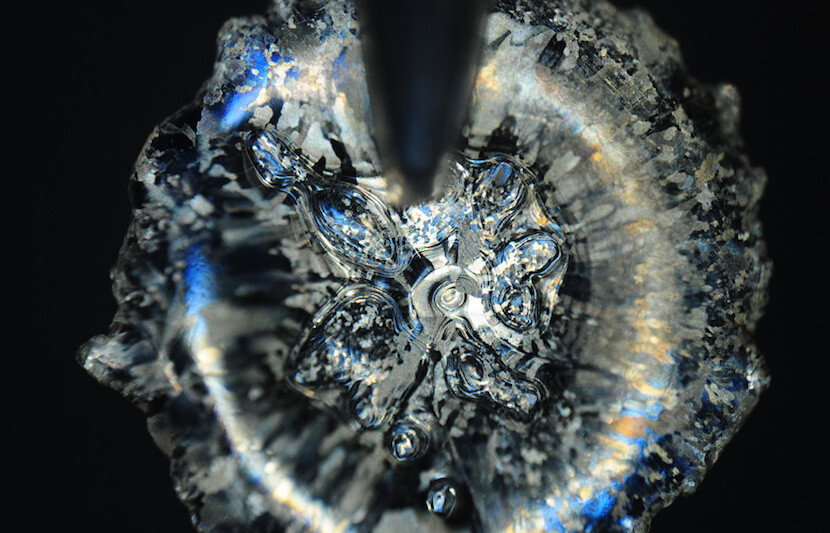Traditionally, when liquid droplets come in contact with a surface, they either stick to it, peel away, or bounce off. Understanding how droplets react to specific surfaces is very important for de-icing freezing rain, developing superior thermal spray coatings, and creating an effective additive process using molten metal.
Now, a team of MIT researchers has shown that the adhesion of a freezing droplet can be controlled by adjusting the thermal properties of a surface.
The research was conducted by MIT Associate Professor of Mechanical Engineering Kripa Varanasi, former postdoc Jolet de Ruiter, and postdoc Dan Soto.
The study was recently published in the journal Nature Physics.
“We have shown for the first time that controlling thermal properties of the surface controls the outcome if a freezing drop sticks or peels from a surface,” Varanasi said.
“This approach is very important wherever freezing drops impact a surface such as icing, thermal sprays etc.”
The research could be beneficial in 3D printing methods that require droplets to stick to surfaces so that each printed layer adheres to the previous layer. It could prevent freezing droplets from sticking to airplane wings, wind turbines and power lines, and would also be useful in the waste management and cleaning of additive manufacturing and thermal spray processes.
In the study, the researchers tested the way drops of molten metal freeze on glass and silicon.
They used “a high-speed Infrared camera to record the temperature signature at the interface between the two bodies during impact,” according to Varanasi.
From the study, the team “found something very interesting,” Varanasi said in a statement.
“We had two substrates that had similar wetting properties [the tendency to either spread out or bead up on a surface] but different thermal properties.”
Although it goes against conventional thinking, the way in which the droplets interacted with the surfaces was drastically different, depending on the nature of the surface. On silicon, which is an efficient heat conductor, the droplets fell right off. When the droplets hit the glass, which is known as a thermal insulator, they stuck.
In additional cases, the researchers found that the droplets were curling up and detaching from the surface. This demonstrates a process called self-peeling.
The study gave researchers an entirely new approach of understanding how a liquid interacts with surfaces.
“It provides new tools for us to control the outcome of such liquid-solid interactions,” Varanasi said in a statement.
Molten metal was applied in the experiment because it is commonly used in industrial processes, such as the thermal spray coatings used on turbine blades and many other machine parts. How well each droplet adheres to the surface of machine parts greatly affects the quantity and uniformity of thermal spray coating.
“[T]he way droplets impact and form splats dictates the integrity of the coating itself,” Varanasi said in a statement.
“If it’s not perfect, it can have a tremendous impact on the performance of the part, such as a turbine blade. Our findings will provide a whole new understanding of when things stick and when they don’t.”
Researchers plan to use information gathered from this study to develop a way to tailor a material’s thermal properties.
“We can imagine scenarios where thermal properties can be adjusted in real time through electric or magnetic fields, allowing the stickiness of the surface to impacting droplets to be adjustable,” Soto said in a statement.
In the future, the researchers will advance this research to explore the sticking properties of additional liquids.
“Now that we have established a new way of controlling sticking of freezing droplets, we can imagine to leverage that knowledge to engineer smart substrates focusing on their thermal properties.” Varanasi said.
“Another direction that has yet to be explored is the extension of this phenomenon to other liquids like thermoplastics, inks, wax, and water which presents great interest.”



